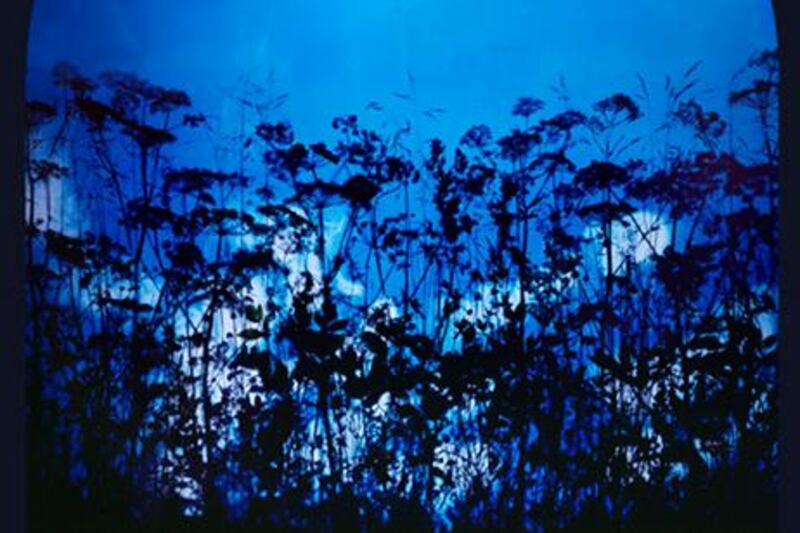The hazy form of a woman floats like a ghost in one life-size print. In another, the ripples of a river deliver swirling mathematical patterns, while a third captures the delicate image of a butterfly on a daguerreotype plate that has been overexposed to create a pale blue background. Each of these images in the new Shadow Catchers exhibition at the Victoria & Albert Museum in London is by a different artist, but they've all been experimenting with the same basic principle: that it's possible to record an object's image using light, chemicals and paper - but no camera.
"We're so conditioned to the syntax of the camera," one of the five participating artists, Adam Fuss, is quoted as saying in the exhibition's literature. "We don't realise we're only running on half the visual alphabet. It's so boring, this way of seeing. It's killing us. In their simplicity, photograms [photographic images made without cameras] give the alphabet unfamiliar letters." Fuss's pictures have an otherworldly quality that suggests phantoms and invisible forces. Among his pieces in the show are images of a ladder, of ripples in water, of an empty christening gown and a baby suspended in water, with ripples emanating like a halo.
Susan Derges is also interested in what goes on behind what the eye can see. Early in her career, the British artist worked by scattering powder on photographic paper attached to metal plates, which vibrated according to sine waves. The powder made regular, arching patterns, which were transferred to the paper. Later, she became interested in the shapes that form in moving water, and would make regular night-time trips to the Taw, a river near her home, where she would submerge huge photographic sheets and illuminate them with a flash to record the river's motion.
"In the end I got rather addicted to making work in the night," Derges tells me at a preview of the show, explaining that initial fear as she splashed around all alone in the dark gave way to amplification of all of her senses. She describes the experience as "intense". The results, on display at the V&A along with her sine wave images and other pictures relating to the natural world, are hypnotic and incredibly intricate.
Derges says that she gets inspiration by reading about biology, maths and physics, and also from roaming the moors near her home in Dartmoor.
"In a tea cup you have these incredibly complex patterns that form every time someone walks across the room and it trembles," she says. "If you look at things a bit more, a whole other world opens up to you. It's extraordinary."
Garry Fabian Miller, another participating British artist, has also addressed the natural world but via a different technique. With his Twenty-Four Days of Sunlight he substituted leaves for photographic transparencies, using an enlarger to make colour images that have a softer quality than straightforward photographs. For four weeks leading up to June one year, Miller recorded one leaf every day in this way, tracking the change from yellow to green, and the resulting photograms invite contemplation of natural cycles and the passage of time.
Like Fuss, the exhibition's curator, Martin Barnes, sees the path that mainstream photography has gone down since its invention in the early 19th century as a limited one. "I'm interested in the alternative, experimental trajectory that photography could have taken if it hadn't become so obsessed with the camera and the lens," he says. "These artists have done something very unusual, totally visually distinctive, which shows exciting, vivid new ways of looking at the world."
The show's other two participants are Floris Neusüss, who pioneered the photogram in the 1960s, and Pierre Cordier, who works primarily with chemicals rather than light, producing "chemigrams", which take the form of puzzles and mazes and make references to poetry, maps and chess. They are made by applying varnish, wax, oil, egg, glue and syrup to photographic paper and dipping it in developer and fixer. "To explore a chemigram," Cordier has said, "you often need eagle eyes... sometimes a seemingly insignificant detail reveals a whole world."
Conventional photographers tend to limit themselves to revealing the surfaces that light bounces off, but by seeing shapes as an absence of light, the artists involved in Shadow Catchers can suggest profound ideas. "It's sort of the flip side of photography," Barnes says, trying to explain Neusüss's spooky, life-size shadow-pictures. "It's photography's strange, uncanny twin."
Shadow Catchers: Camera-less Photography, V&A, London. Until February 20.





